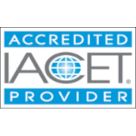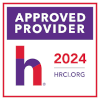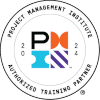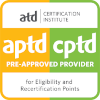Product Details
Topics Covered
- Software development and security
- Computing environments
- Software development life cycle (SDLC)
- Project Life Cycle (PLC)
- The kernel
- Device drivers
- System utilities
- Software development models
- Programming languages
- Software configuration management
- Software escrow
- Configuration management
- Application and operating environments
- Object-oriented programming (OOP)
- Distributed Computing Environment
- Databases
- Cloud Computing
- Web Application Security
- Software-based attacks
- Trusted Recovery
- Mobile Operating System
- Physical access controls
- Physical security controls
- Network Security Controls
Key Features
- Mobile-friendly
- Audio-enabled
- Badge and credit-awarding
- Real-world case studies
- Fully accessible
- Games & Flashcards
- Expert-supported
- Video content
Course Preview
Course Description
Learning Outcomes
- Discuss the role of security in software development
- Explain the software development life cycle and compare its eight stages
- Understand what the operating system is and how it works
- Describe different application and operating environments
- Discuss the role of databases and the information security challenges they raise
- Understand the various vectors for attack
- Explain the objectives of Trusted Recovery and the concept of system hardening
- Recognize the need for physical security and the varying means of achieving it
- Recognize the need for physical security and the varying means of achieving it
- Apply security concepts to real-world scenarios highlighting the need for application, data, and host security
Notes
This course has an "Ask the Expert" feature, which submits your questions directly to an expert in the field you are studying. Questions are answered as quickly as possible and usually within 24 hours.
As an Accredited Provider, MindEdge offers for its learning events that comply with the Continuing Education and Training Standard.
Learners must achieve an average test score of at least 70% to meet the minimum successful completion requirement and qualify to receive credit. Learners will have three attempts at all graded assessments.
Project Management Institute, , the Registered Education Provider logo, Project Management Professional, , Project Management Body of Knowledge, , Agile Certified Practitioner, -, Risk Management Professional, -, the Talent Triangle, and the Talent Triangle logo are marks of the Project Management Institute, Inc.
Information in this course has been taken from A Guide to the Project Management Body of Knowledge, (® Guide) - Sixth Edition, Project Management Institute Inc., 2017.
The following list outlines the you will earn for completing this course, based on the certifications you have.
CAPM®/PMP®/PgMP® |
|---|
| Ways of Working PDUs: 2.5 |
| Power Skills PDUs: 1.5 |
| Business Acumen PDUs: 1 |
| TOTAL: 5 |
PfMP® |
|---|
| Ways of Working PDUs: 0 |
| Power Skills PDUs: 1.5 |
| Business Acumen PDUs: 1 |
| TOTAL: 2.5 |
PMI-ACP® |
|---|
| Ways of Working PDUs: 2.5 |
| Power Skills PDUs: 1.5 |
| Business Acumen PDUs: 1 |
| TOTAL: 5 |
PMI-PBA® |
|---|
| Ways of Working PDUs: 0 |
| Power Skills PDUs: 1.5 |
| Business Acumen PDUs: 1 |
| TOTAL: 2.5 |
PMI-RMP® |
|---|
| Ways of Working PDUs: 2.5 |
| Power Skills PDUs: 1.5 |
| Business Acumen PDUs: 1 |
| TOTAL: 5 |
PMI-SP® |
|---|
| Ways of Working PDUs: 0 |
| Power Skills PDUs: 1.5 |
| Business Acumen PDUs: 1 |
| TOTAL: 2.5 |



